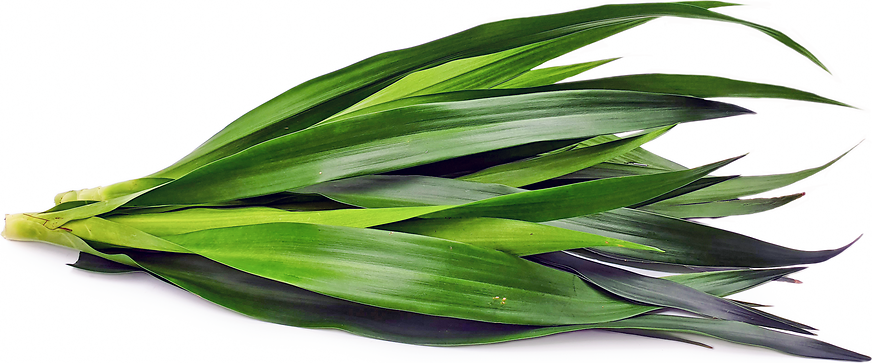


Suji Leaves
Estimated Inventory, lb : 0
Description/Taste
Suji leaves are long, flat, blade-like leaves. They are a dark green in color. They grow alternately upwards from greyish stems. Each leaf may reach 30 centimeters in length and 2 to 4 centimeters in breadth. The leaves must be pounded or crushed to extract any flavor. Suji leaves are extremely mild in taste with faint notes of grass, coconut and pandan.
Seasons/Availability
Suji leaves are available year-round.
Current Facts
Suji leaves are botanically classified as Dracaena angustifolia or Pleomele angustifolia. They are primarily used along with pandan leaves -- not for flavor, but for color. Suji leaves are high in chlorophyll and therefore are used in sweets and puddings to give them a bright green hue. The color is so strong that it is sometimes used as a dye for batik cloth in Indonesia.
Nutritional Value
Suji leaves contain compounds good for health such as alkaloids, flavonoids, tannins, and saponins. They also contain vitamin C.
Applications
Suji leaves are mainly used as a food coloring. They are used in Indonesian dumpling-like rice cakes known as 'Klepon', which features palm sugar and grated coconut; Serabi, a pancake-like treat made from rice flour and coconut milk; Dadar Gulung, a rolled crepe with coconut filling; and Pandan cake, a light sponge-like cake with pandan flavoring which are green in color. Suji leaves may be processed in a grinder or a blender, or ground or chopped by hand. They are boiled and left to steep in water to extract the green coloring, which is then used for the color of the sweets. Store Suji leaves in a loose bag in the refrigerator, where they will last for up to three days.
Ethnic/Cultural Info
Suji leaves are used in West Java to treat coughs, asthma and lung disorders. They may be boiled then squeezed in order to 'juice' them. This extracted liquid is also known as a tonic that can help to invigorate the appetite. In Vietnam, Suji leaves are valued for their anti-inflammatory effects.
Geography/History
The exact origin of Suji leaves is unknown. However, the species is found in tropical Africa to the Pacific Islands. They are commonly found cultivated, as well as in the home gardens of those in Indonesia, Malaysia and Vietnam, where they have been used for centuries for medicinal purposes.




